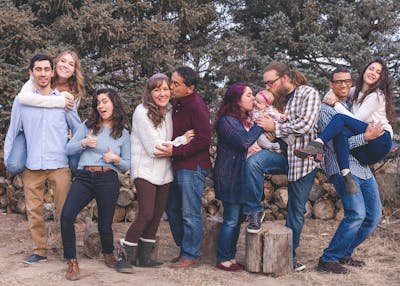THE PRIDE OF OLDEN DAYS FAMILIES WAS IN THEIR NUMBERS
Every family was unique, being weighed by numbers and, if lucky, by societal relevance. The essence of having many children was primarily because of the vast farmland possessed by individuals and the need to have many hands on the farm, especially since there was no mechanized farming equipment. Oftentimes, these many children were born to multiple mothers, and for some reasons, the families stayed more united than the modern ones. However, our grandparents gave birth to children in their dozens, perhaps as a form of competition with other women. It was not unusual to have women bear more than ten children for a man, and the man could have as many as thirty to forty children from different wives. It was not unusual to be younger than one's nephews or nieces due to the age gap often existing among children in the past.

Right from courtship, the majority of ladies and even men have agreed upon having just two or three kids, and the maximum desired is four or five. It is difficult to see a woman bearing more than five children for any man in this generation. Also, modernization and Christianity have narrowed the number of wives a man can have to one. And in the face of rising economic hardship and reality, perhaps with government policies as regards the number of children to have, most couples end up as a nuclear family. This is my ideal family, as there is likely to be less drama in terms of fights when the numbers are high. Gradually and over time, the practice of polygamy has begun to fade out. Modern families have benefited from family planning practices that have aided in family spacing, among others. This opportunity was lacking before, and the practice of reproduction was almost dependent on traditional means such as withdrawal.
Having a large number of family members has a tendency to disperse members to different parts of the country and even around the world. We get to experience occasions where relatives do not know one another and may only depend on photo albums. Now, we have relatives that do not necessarily know themselves well because of the gap among them. Some families have a tradition of periodic get-togethers, which helps foster unity among them.

A nuclear family has just the parents and a small number of children. Here, the age gap is usually small, and everyone knows one another. The children grow up together, and their heights may even be similar, making it a bit difficult to distinguish the older from the younger.
As age advances and there is a need to achieve some goals in life, the family grows farther apart, and some relatives may not see one another in years. An alternative to this is a family WhatsApp group and, occasionally, video calls that bring everyone together virtually. Nonetheless, this is not as good as meeting one another physically.
We all should enjoy the bliss of togetherness when the family is still within reach and not widely dispersed. If there are occasions or celebrations that can bring family members together for visiting, such should be encouraged. Family bonding should be encouraged by regular meet-ups.
You can participate in the monthly and daily #inleo PROMPT HERE
Thank you for reading. I would love to have your comments and contributions.
Posted Using InLeo Alpha